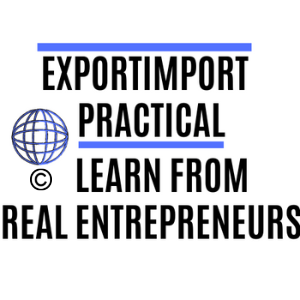How to start an import and export business in South Africa, this is a question many entrepreneurs are interested in.
The following article will guide you on how to start an import and export business in South Africa. We will also describe how to succeed in this business, which are import opportunities in South Africa, business opportunities in South Africa in general. Here we look at what are the import and export products of South Africa and the actual steps one should take to start the international business.
You will be equipped with a solid knowledge base that will help you be confident in your export-import business. This post will give you many export-import business ideas.
PS! For newbies, we suggest enrolling in our mini-email course regarding the export-import business. Enroll below.
Business opportunities in South Africa
South Africa has a population similar to England and it is one of the largest countries on the African continent. It is also the most developed African country.
Due to the natural conditions, natural disasters and political fluctuations, South Africa itself do not produce enough food, agricultural products, and consumer goods to meet the needs of the people. This means great business opportunities and especially import opportunities in South Africa.
Currently, products such as rice, coffee, pepper, coconut, seafood, mobile phones, electronics, textile products, footwear … of Asia are the main import in South Africa.
The purchasing power is high but the quality and design requirements of Africans are moderate, not too strict like the markets of EU, USA, Japan … So South Africa promises to be a new potential market, highly attractive for small and medium-sized businesses.
Overview of the South African trade
The South African market stood out with the increased consumption of industrial goods and industrial production. 2018, Exports and imports increased, but Rand, the SA currency depreciated.
By the end of March 2018, South Africa’s exports reached about 268.8 billion Rand (equivalent to 21.5 billion USD); imports reached 287.4 billion Rand (equivalent to 23 billion USD), an increase of 9.1%.
Export situation of some key products of South Africa in 2018: Mineral products increased by 12%; Precious stones and metals increased by 15%; Metals increase by 19%; Machinery and electronic equipment increased by 10%: means of transport decreased by 9%.
2. Top export/import products of South Africa
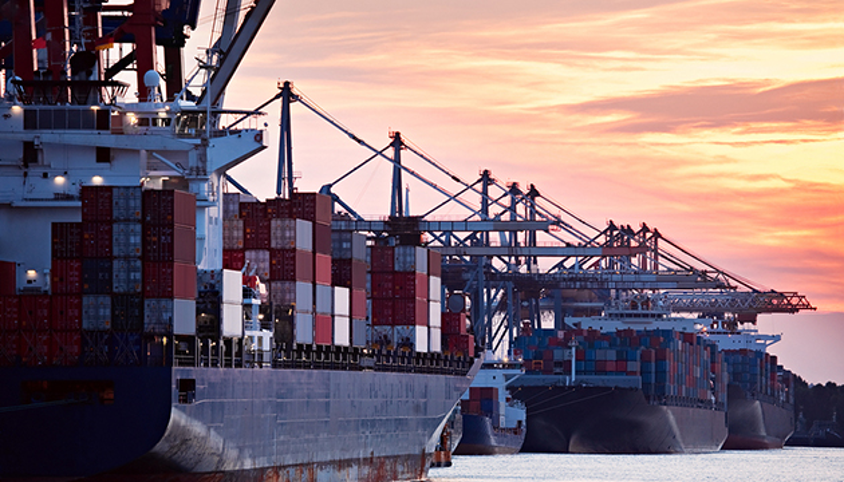
If you want to start exporting in South Africa, then you first need to know the export opportunities of South Africa. Below are SA main export commodities.
Top export products of South Africa in 2018
- Gems, precious metals: US$16.6 billion
- Ores, slag, ash: $11.8 billion
- Vehicles: $10.8 billion
- Mineral fuels including oil: $10 billion
- Iron, steel: $6.3 billion
- Machinery including computers: $5.8 billion
- Fruits, nuts: $3.7 billion
- Aluminum: $2 billion
- Electrical machinery, equipment: $1.8 billion
- Plastics, plastic articles: $1.4 billion
In 2018, industrial production increased by 1.3%, of which: food and beverage group increased by 1.7%; Group of textiles, footwear and shoes increased by 1.4%; Paper and wood products decreased by 0.9%; Petroleum products and rubber and plastic chemicals increased by 1.7%; The group of glass and non-metallic minerals dropped by 0.9%, metal and machinery group increased by 1.3%; The group of electrical equipment increased by 3.7%; The electronics group decreased by 1.7%, the group of means of transport increased by 6.2%; Furniture group decreased by 3.9%.
Top import products of South Africa
Import situation of some key products of South Africa in 2018: Vegetable products decreased by 31%; Mineral products decreased by 14%; Metals increase by 13%; Machinery and electronic equipment increased by 6%; Means of transport increased by 12%. South Africa has great import opportunities for small and medium-sized companies.
The following list illustrates the country’s top import products:
- Mineral fuels including oil: US$17 billion
- Machinery including computers: $11.5 billion
- Electrical machinery, equipment: $8.6 billion
- Vehicles: $7.1 billion
- Plastics, plastic articles: $2.8 billion
- Pharmaceuticals: $2.5 billion
- Optical, technical, medical apparatus: $2.3 billion
- Other chemical goods: $1.7 billion
- Organic chemicals: $1.6 billion
- Inorganic chemicals: $1.6 billion
3. How to start an export business in South Africa
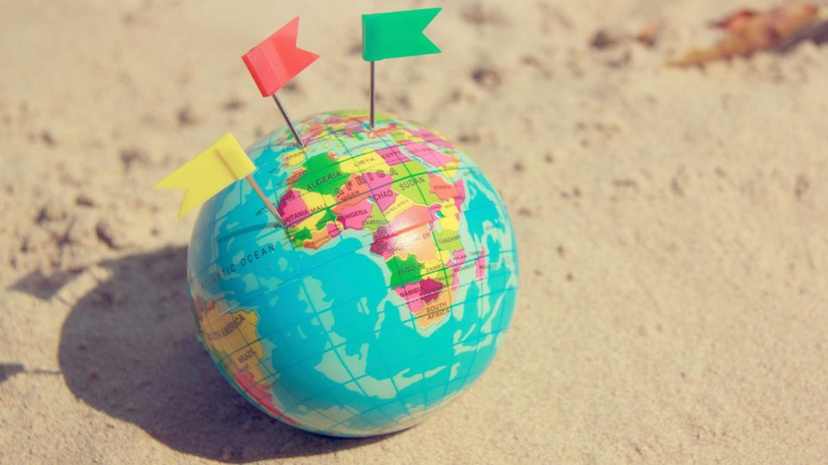
How to open an office or branch in South Africa
If you want to start exporting to South Africa, then one possible way, to enter into the South African market is trough representative office. The office there can proceed with the marketing and sales activities for your business. The export-import companies which want to open a representative office or branch in South Africa need the following documents:
- Holding company profile (including establishment decision, charter, functions, tasks …)
- The decision of the government to permit the opening of an office in South Africa
- The decision to appoint an office or branch director
- Original passport of the director of the office or branch
- Business license of the holding company
(All the above documents must be translated into English and notarized)
8. Certified office or branch location (lease or purchase agreement in South Africa)
Working visa for employees working at the branch or office will be issued, after having been granted an operation registration certificate. The duration of a visa is usually one year and can be extended if needed.
Opening an office or branch is just one option for those who want to get export orders from there, we think it is possible without having a rep office. You can export to South Africa from your own country directly and do the export marketing in your home country. Follow the steps below, to export to SA directly.
Enroll our mini-course above, it will guide you into the opportunities and possibilities of international business.
Steps to start exporting in South Africa
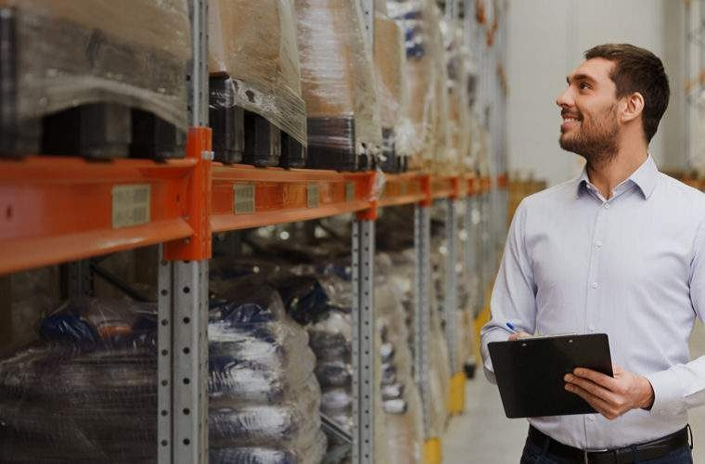
1.Select export products for South Africa
Before you start exporting, You need to have a clear understanding of your products and the market you are going to enter and the existing import opportunities there. Consider whether your products are loved by local people? Which products local people need, which products local distributors are looking for.
You need to know, how to choose the suitable products for export.
To be more competitive, you either offer a unique, unprecedented product on the market or find a niche that doesn’t have many competitors.
Finding such a potential product requires you to have an eye on the market, learn about current local customer problems, and find a product that solves that problem.
Related reading: Advantages and disadvantages of exporting.
2.Select distributors/ suppliers for your products
Whether you are looking for materials or products to export, you need to find a potential supplier. They are the people or companies who provide you with the best source of goods, the most reasonable price and the criteria which is suitable for the export market.
Suppliers can be:
- Manufacturers: Most retailers buy the product through a broker or trade representative, who collects goods from multiple sources to supply to retailers. Of course, the price of the manufacturer will be the cheapest, but it is also difficult to access this supply, as usually, manufacturers ask bigger purchasing volume.
- Distributors: Known as wholesalers, brokers, distributors buying from manufacturers, and stockpiles of large companies and reselling to retailers. Although the price of the distributor is higher than that of the manufacturer, they can flexibly handle small orders or collect goods for retailers.
- Parties acting as sole agents: They only provide goods by representative offices or at fairs and exhibitions.
A good supplier always ensures the right and sufficient quantity of goods and guarantees the quality at the time of signing the contract. Maybe you are having relationships with large and reputable suppliers, but do not ignore potential small suppliers.
Distributors can be:
South Africa allows suppliers to choose from a variety of formats for distribution and sales. This includes the use of an agent or a distributor, or you can sell goods through wholesalers or merchants, selling directly to department stores or retailers. Or may set up a branch or a company of your subsidy capable of directly selling your goods.
When choosing a distributor, you must be very careful about whether the distributor has a competing product or not. Some exporters have been approached by large South African corporations who learn and compete for their products to supply directly with the products you are entrusting them as distribution channels.
3. Find customers/buyers
You can access the B2B channel or search on the web, on the forum of the industry you are interested in. You must be persistent and not discouraged, waiting for the opportunity to find potential customers to offer. Make sure you have a list of local customers/agents sign up to buy your shipment before exporting to South Africa.
Related reading: How to find and keep customers for your international business.
4.Handle export procedures and documentation

Goods exported to South Africa must be registered for customs clearance within 7 days of their arrival in South Africa. Aviation declared or cleared during that time will be brought into the State Warehouse. Some items need import permit of the South African Ministry of Industry and Trade. If the declaration is not submitted, the goods will be confiscated by the Customs.
Import license:
Some goods which you want to enter South Africa must have an import license/permit, such as used equipment, consumer goods (food, clothing, textiles, shoes, books, newspapers, etc.), wood products, paper of all kinds, fuel for automobiles and aviation, petrochemical products, other industrial products and materials such as materials and equipment for manufacturing cars.
Certificate of Origin
A certificate of origin (C / O) or in South Africa called D / O (Declaration of Origin). It is made according to Form DA-59, confirming the country of origin of the goods. Is required to be able to operate transfer some imported goods into South Africa such as: all kinds of waiters made of stainless steel (stainless steel tableware), kitchen utensils, household appliances, assorted cups, jars with a diameter not exceeding 70mm; uncoated iron and steel, motorbike air filters, gasoline filters, motor oils, radio receivers, telephones, radios.
South Africa Customs will notify the importer whether a Form DA-59 is needed and the importer will notify the exporter. Once this form is necessary, the exporter or supplier must present at least one original enclosed with the original commercial invoice. C / O does not necessarily have to be certified by the Chamber of Commerce and Industry or certified by Customs.
The documents which needed to transport goods to South Africa include:
- The original commercial invoice, clearly stating the price and shipment of the importer, must be accompanied by the export price of the goods (the price of F.O.B. and the price of C.I.F).
- Bill of lading
- Insurance certificate
- Packing list
5. Arrange export customs
Goods exported to South Africa are registered in the following forms:
- Import into SACU (Southern African Customs) for household goods (tax payment/benefits/ tax exemption)
- Import for warehousing (tax debt or for re-export)
- Transferred to South Africa
- Temporarily importing to SACU for processing and then re-exporting
Regulations on customs clearance for export to South Africa
All relevant documents must be submitted to ‘Customs and Excise’, part of the South African Revenue Service at the port of destination before goods are cleared. Most types of exported goods must be declared in the ‘Bill of entry ‘entry form.
The required documents that need to be presented to the customs in the export dossier set include:
– Goods entry declaration: Bill of entry
– List of ZAR foreign currency and local currency exchange rates and the value of imported consignments at that exchange rate: Customs Worksheet
– Commercial invoice
– Import permit, if any: applicable to goods subject to import management. The license number and the license expiry date must be shown on Form DA 500
– Special import licenses: Special import certificates or innovations, applicable to goods subject to inspection or special permits of the relevant South African authorities.
– Transport documents: transport documents (‘Bill of Lading (sea)’, ‘air waybill (air)’, ‘freight transit order (rail)’, ‘road ‘waybill’ ‘)
If all documents presented are valid and complete, the documents will be stamped by the customs (customs and excise department), while the importer completes the payment of import duties and taxes. excise duties (if any), and VAT, goods are officially cleared
– Certificate of origin: (Form DA59), applicable to certain types of goods such as goods under anti-dumping investigation or goods eligible for import preferences under the provisions of the Article international convention.
Customs clearance of imported goods usually takes place within 24 hours for air freight and from 2-3 days for sea freight, depending on the port of entry.
6. Choose shipping methods
To be able to transport goods, it is imperative that you have a means of transport to transport goods to South Africa. You should be looking for a reputable international transport company to be a long-term partner
You can choose shipping services from partner companies for a large shipment to ensure your shipment can be exported successfully and intact.
Choosing the right form of shipping to South Africa:
Express delivery: When the volume of the goods is low but need to go fast, choose Express delivery for individual gifts, sample goods, luggage to South Africa, Durban, Capetown.
Shipping by sea: such as transporting machinery to South Africa, clothes by sea. Transportation of ceramics, wardrobes, TVs by sea, fine art goods to South Africa .. etc.Not only for bulk shipping but also for bulk containers via South Africa (FCL).
No matter, how you deliver your goods, you should always be able to control and see the specific route of your shipment. Tracking shipping goods to South Africa
7. Take Insurance
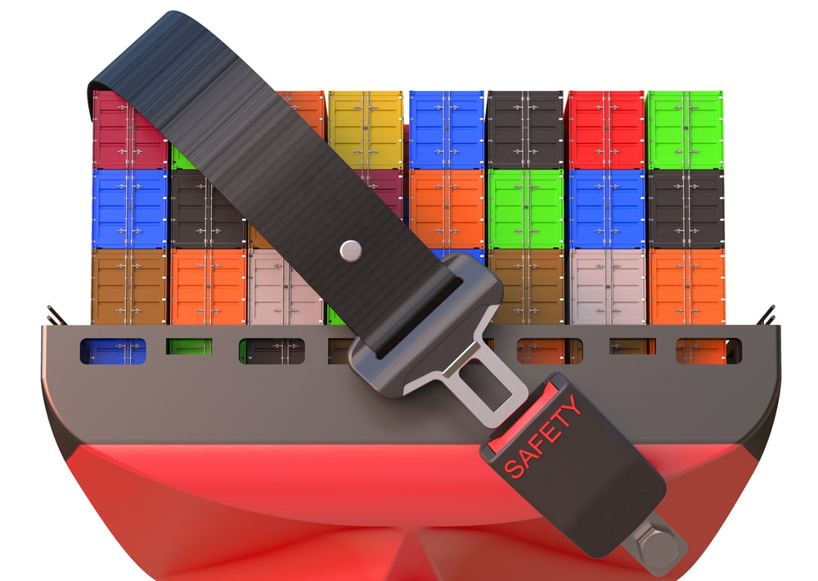
Cargo insurance will help protect your goods against the risk of physical damage (loss/damage), during transportation by road, rail, waterway, air. Normally shipping companies also include insurance, but for safety, you can refer to other types of insurance.
Different insurance companies will have different insurance policies.
Insurance will usually compensate for unexpected unforeseen material losses due to non-excluded risks stated in the rules of insurance for import and export goods such as:
- Explosion
- Ships are stranded, sunken, sunk or capsized;
- Transport means flipping or derailing;
- The collision of ships, boats, and means of transport with objects other than water;
- Unloading goods at the port of refuge;
- Throw goods into the sea;
- Contribution of general average;
- Rescue expenses;
- The responsibility of collision on the basis of collision and two ships are at fault;
- Earthquake, volcanic eruption, lightning.
- Seawater, rivers, and lakes flood into ships, boats, means of transport, containers, places of cargo
- Seawater sweeps goods off the deck.
- Total loss of any package that was dropped from the deck or dropped during loading or unloading from the ship or barge.
- Pirates
- Special risks: contamination, leakage, loss in transit
We advise reading also: the biggest risks in the export business and how to overcome these.
8.Pay duty taxes
Import tariffs, including customs duties, import duties and other taxes on imported goods, you can search at The South Africa Trade Organization (SAFTO) at the following address: POBox 782706, Sandton 2146, South Africa. The South African Foreign Trade Organization (SAFTO) is a specialized agency that provides economic, trade and market information, as well as contact details for your business in South Africa.
South Africa’s import tax is usually from 0 to 45% with some exceptions. South Africa has adopted a system of HS tax codes and customs duties, as well as import duties, calculated on the basis of customs value (F.O.B) for each specific item. The tax rates are as follows:
- 0% for agricultural products and tools, capital goods and intermediate goods, goods as input materials for production, processing, and essential foodstuffs.
- 15% for goods such as airplanes, cars of all kinds, excavation and tillage equipment, computer software, machinery, and other equipment, etc.
- 40% for other luxury and luxury consumer products such as TVs, video cameras, camcorders, video players, antiques, jewelry made of gold, silver, gems, etc.
9. Get your products
Customs warehouse
When goods arrive in South Africa, if the import-related taxes have not been paid yet, they will be transferred to bonded warehouses. Although the customs office does not own the bonded warehouse, it has full control over the bonded warehouse. Only goods with full tax documents are allowed to leave the bonded warehouse. Goods can be exported from bonded warehouses.
Notes:
– Goods must be packed according to export standards and guaranteed for transportation
– Gifts or gifts are also subject to import duties based on FOB value and must be packaged separately.
– Do not mix drinks or canned food with other goods, otherwise, it will delay the delivery of goods at the Customs and may incur additional costs.
10. Service your customers
Customer care plays a huge role in deciding whether customers will return to buy your products next time or not.
To satisfy customers, you need to focus on the following three key elements: Product quality, quality of consulting services, quality of after-sales service. With the same type of products and services, as long as you focus on caring and customer satisfaction, you can attract loyal customers to buy your goods.
If you are a beginner, start from the introduction to the export/import business. Enroll in the mini-email course above.
4. How to start an import business in South Africa
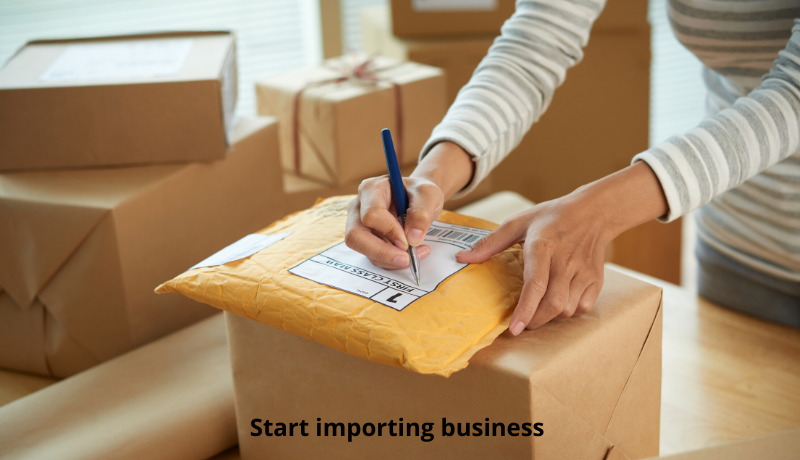
1.Conclude Import market research
Market research is a necessary activity when starting to import into South Africa. Because it will provide complete and accurate information to help you devise a suitable strategy and thereby bring high efficiency. South Africa has many import opportunities, but all must be well searched and planned.
If you are not subjective to market research or superficial research, decision making can be highly risky. That will come with many other consequences, such as a strategy of failure or waste of resources.
In order to have a thorough grasp of market factors and understand the market movement rules in a timely manner, you necessarily conduct market research, including researching imported goods, researching market capacity, selecting customers, researching commodity prices in import.
2. Decide the suitable products to import from South Africa
The purpose of researching imported goods is to carry out the import of the right kind that the domestic market needs to operate effectively in order to achieve the profit target of the enterprise.
The identification of imported goods is firstly based on research on domestic production and consumption in terms of quantity, quality, seasonality, tastes as well as consumption habits of each region and each production sector.
From there, conduct an examination of the aspects of the goods that need to be imported, such as utility, characteristics, specifications, qualities, designs, prices, purchase and sale conditions, production skills, and associated services. ..
3. Find buyers/clients/customers
Customers are persons or organizations that have relations with you in order to perform contractual sales and purchase of goods or services, economic activities related to the supply of goods.
Select B2B: Often choose direct consumers. You need to consider the partner’s business viewpoints, their business areas, capital, facilities, prestige and relationships in their businesses.
4. Get import license
Every importer needs to register with the customs office in their country to receive an importer’s code.
a. Are the goods you want to import licensed?
b. Are there restrictions, licenses, or licenses required?
c. The tax and tax incentives you are eligible to receive depending on the company, product, country of purchase, etc.
5. Find service Providers
One of the most important decisions when doing import business is finding a reliable service provider. There are many service providers in the import process and depending on the import business, you can choose one or more.
Customs service has 2 options:
Customs forwarders: companies or individuals providing services of introduction on behalf of goods owners for customs clearance. The service provider does not appear the name of the legal entity (or individual) on the customs documents.
Customs agents/brokers: service companies (individuals must not do) in their names and use their digital signatures to fill in the declarations and copies of documents to submit customs dossiers. The service company uses its own name to provide the service
Related reading: How to import from China.
Conclusion
Like other African countries, South Africa exports many precious materials for industrial production and processing such as: minerals, chemicals, wood, cotton, raw cashew nuts … and imports almost all commodities, especially food and foodstuffs such as rice, rubber, coffee, pepper, cashew nuts, etc.
While most other African countries are constantly immersed in ethnic wars, religious conflicts, political instability, disease, poverty, and backwardness, South Africa is very stable. Therefore, doing an export-import business in this country is not difficult if you have enough preparation and assertiveness. Especially, we advise paying attention to the import opportunities in South Africa.
To raise the rate of success, we advise to research and analyze properly. One who wishes to start his/her own international business should conclude a comprehensive business plan. We advise especially put effort into the marketing and sale and conclude export marketing plan.
To help you get started, we have created different export-import business courses and programs and resources. You can take a look of these below.
You can learn on any platform, from smartphones to tablets, laptops, and desktops.
- Export-import business courses and programs
- Most popular online exim course: “Zero to first deal“
- Resources and action plan for exporters/importers, online sellers.
